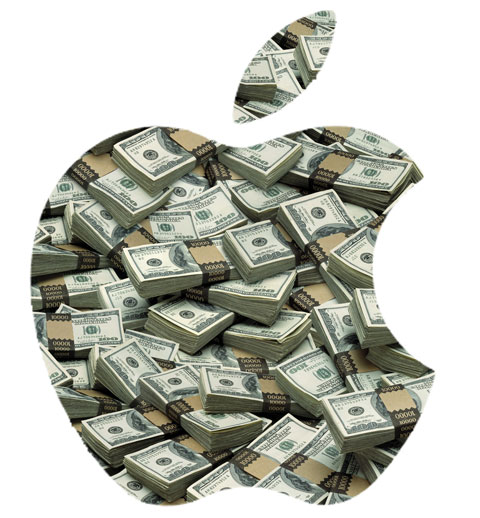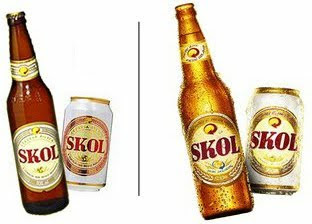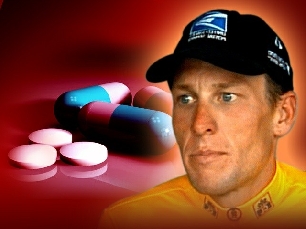How much would you spend to make your brand become famous in your city, state, country, or even worldwide?
In the second post of this blog, “More than brand names,” I talked about the importance of brand names in business. By that time, I wrote:
“Getting inside people’s minds is one of the goals of Marketing strategies, and having the brand name recognized by society leads to power, big percentage of the market share, and increased number of sales.”
Let’s pretend you found out the formula of McDonald’s hamburger, and started to produce and sell this product. Do you think you would have the same success of McDonald’s? Probably not. Maybe you could increase the awareness of your business locally, but it would be necessary much more than that in order to defeat McDonald’s.
How many times have you heard that Samsung smartphones were better than iPhones, but at the end, you preferred to buy the Apple device?
Why products with the same characteristics, like detergent, can have big differences in price? All of these factors are consequence of a company’s power inside an industry, which is reflected by customer loyalty, for example.
In the article “What’s Apple’s brand worth? More than $100 billion,” Rex Crum (Oct, 2014) states the following:
“When it comes to determining a company’s worth, the easiest way to do so is to look at its stock price, multiply that by its shares outstanding, and you get a value for its market capitalization… But there is also the value that a company gets from its brand, and what customers attribute to the power of that brand.”
Companies have many types of assets. When you think about what a company owns, you probably think about its structure: equipment, factory, building, stores etc. However, have you ever thought about a company “having its own brand name” as an asset? Investopedia defines intangible asset as:
“An asset that is not physical in nature. Corporate intellectual property (items such as patents, trademarks, copyrights, business methodologies), goodwill and brand recognition are all common intangible assets in today’s marketplace.”
According to Forbes (calculated in November 2014), the most valuable company’s brand name is Apple, which is worth $124,2 billion. You can check the list in the link below:
The World’s Most Valuable Brands
The article “What’s Apple’s brand worth? More than $100 billion” also discusses this subject. Here is the link:
What’s Apple’s brand worth? More than $100 billion
Therefore, it is clear that companies usually spend years and millions of dollars developing and creating value to its brand name. But let’s think for a second… what if you reached this success, and this were all destroyed overnight?
A lot of different factors can strongly harm a company’s image and directly affects its reputation. Not only customer’s distrust have huge effects on sales, but also outside investors lose interest on investing their money. Companies can even lose some opportunities to promote their brands, which can prevent a company from overcoming a bad situation.
Let’s pretend you were the responsible of Super Bowl’s commercials and you were negotiating with companies in a specific day. Two days before, one of those companies were in the newspaper accused of slave child labor. Would you want that company sponsoring your event? Would you want your event’s image connected to slave child labor? I do not think so.
Nike has faced several accusations through the years. It is always a challenge to recover its image and avoid significant decrease in sales. Worker abuse and child labor are some examples that made Nike be shamed in public. Fortunately, Nike’s economic power was crucial to overcome all those situations. You can check more some information about this subject in the links below:
How Nike Solved Its Sweatshop Problem
Nike workers ‘kicked, slapped and verbally abused’ at factories making Converse
However, it is not always possible for a company to recover from those types of crisis. PRIDE, a Japanese company, used to be the biggest MMA (Mixed Martial Arts) organization of the world. In 2002, PRIDE held the largest MMA event audience record with of 91,000 people.
Everything seemed to be in control until the day that a connection with Yakuza, the Japanese mafia, came out. PRIDE consequently lost sponsors, TV channels stopped transmitting its event, and some problems with local laws harmed the organization. This led to an increasingly decrease of its value, until the day that the organization was bought by Zuffa, which also owns UFC, the current biggest MMA event of the world.
Reputation problems, however, can be also a consequence of external factors that affect the daily business of a company. For this, I am going to use Ambev as an example.
In Brazil, most of beers of 600ml used to be sold in the same type of bottle, and this factor contributed to the falsification of Skol, an Ambev’s beer. Criminals were changing the label of bottles and selling cheap beers with Skol labeling, which was a devastating to Ambev’s sellings when the scandal came out.
Skol lost a significant market share, and even ceased to be the most sold beer in some states. Ambev had to overcome that problem, and as a big company, with a lot of money and a huge structure, Ambev was able to produce a new bottle, inexistent in the market, with 630ml. Besides the promotional side of this innovation, once it was sold by the same price with more liquid, the bottle was unique, directly fighting against possible frauds.
The interesting part of name value is that it is not only related to companies, but also people. Did you ever realize that companies constantly use famous people in their commercials? Probably. They also sponsor them so they will use their products to promote the brand for their fans. In these cases, the fans are usually the target market.
People’s name also have their value. It is never a good idea when people talk bad things about you, right? It works like a “personal marketing.” Your image needs to be preserved. Therefore, if you are famous, you have to be very careful with everything you do not to harm your reputation. Sometimes it is not only the image that is threatened, but considering that you name works like a company promoting products and services, a lot of money is involved.
Have you heard about Tiger Woods scandal? Before November 2009, there was only one definition for Tiger Woods: the best Golf player of the world. He was even named by Forbes in October 2009 as the first athlete to earn $1 billion. But at that year, many infidelity cases started to be reported by the media, and his career would be harmed forever. Tiger Woods lost several sponsorships, and the idol became just a hated person for many of his fans. According to Wikipedia, “A December 2009 study estimated the shareholder loss caused by Woods’ affairs to be between $5 billion and $12 billion.” Check out these links:
Tiger Slam, Tiger Effect, Then Scandal
The night Tiger Woods was exposed as a serial cheater
Lance Armstrong’s doping scandal, one of the biggest in sport history, had a huge effect in his professional and career and personal life. For the professional side, he lost all his seven Tour de France titles. For the Marketing and personal side, he even achieved the mark of losing eight sponsors in a single day. More information in the links below:
Armstrong Loses Eight Sponsors in a Day
Lance Armstrong’s doping drugs
As you can see, name seems to be a very important “product” in Marketing. A brand reputation can be affected by several different factors, and it is always important to follow the line not to take any risk of devaluing its name.
As always, I hope you all enjoyed reading this post!
See you soon!
Other References:
http://www.bloodyelbow.com/2009/12/25/1219520/the-top-mma-stories-of-the-decade
http://www.mixedmartialarts.com/news/388511/Fedors-former-manager-details-PRIDE-Yakuza-ties/
http://en.wikipedia.org/wiki/Pride_Fighting_Championships
http://investopedia.com/terms/i/intangibleasset.asp
http://en.wikipedia.org/wiki/Tiger_Woods#Infidelity_scandal_and_fallout











